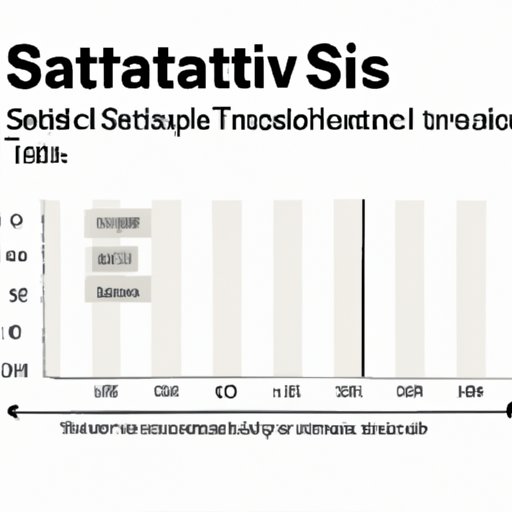
I. Introduction
When conducting statistical analyses, it is essential to calculate a test statistic as it helps in determining the statistical significance of the results. However, many find the process of calculating test statistics complicated and overwhelming, leading to errors and inaccurate conclusions. This article aims to provide a step-by-step guide and tips for calculating test statistic with accuracy and ease, ensuring accurate statistical analysis for various data types and hypotheses.
II. What is a Test Statistic?
A test statistic is a numerical value used to determine the statistical significance of a sample population in hypothesis testing. It measures the distance between the observed sample data and the hypothesized population parameter that it tests.
For example, if a researcher wants to know if a new drug reduces blood pressure, they can conduct a study with a sample group and compare the results with the general population. The test statistic determines the probability of the observed difference in sample data occurring by chance alone.
III. A Step-By-Step Guide for Calculating a Test Statistic
Calculating a test statistic involves specific steps to ensure accuracy and efficiency.
1. Define the null and alternative hypotheses: The null hypothesis emphasizes no significant difference between sample data and the population parameter, while the alternative hypothesis suggests a significant variation between the two datasets.
2. Choosing an appropriate test statistic formula: The selection of the test statistic formula is dependent on the data type and the hypothesis being tested.
3. Collecting sample data and computing sample statistics: Collecting data and computing sample statistics, for instance sample mean, sample size, variance, and standard deviation.
4. Plugging the sample statistics into the test statistic formula: Plugging the sample statistics into the formula to get the test statistic value.
5. Calculating the test statistic value: Use the values of the sample statistics from step 3 and plug them into the formula from step 2 to calculate the test statistic value.
IV. How to Use Statistical Formulas to Determine Test Statistic
There are various statistical formulas to determine the test statistic, and the selection of the formula depends on the data type and hypothesis under consideration.
For instance, the one-sample t-test formula is utilized when testing population mean hypotheses using a small sample size, while the two-sample t-test formula is utilized when dealing with an independent or dependent sample of two groups.
It is necessary to understand the right statistical formula for valid and reliable results.
V. Understanding Hypothesis Testing and Calculating Test Statistic
Calculating test statistic is essential in hypothesis testing. In hypothesis testing, the null hypothesis is typically set first, followed by the alternative hypothesis.
There are two types of errors that researchers can err on: type I and type II errors. Type I errors involve rejecting the null hypothesis when it is correct, while type II errors involve accepting the null hypothesis when it is incorrect.
It is crucial to recognize the significance of the results and calculate the test statistics accurately to avoid these statistical errors.
VI. How to Interpret Test Statistic Results and Make Conclusions
After calculating the test statistic, it is essential to interpret the results by determining statistical significance. Two methods are using critical values and p-values.
By comparing the test statistic value with the critical value, researchers determine whether to reject or accept the null hypothesis. A p-value, on the other hand, indicates the probability of obtaining the test statistic value by chance alone
It is crucial to interpret the results and conclusions of the statistical analysis in the context of the original hypothesis.
VII. Tips for Calculating a Test Statistic Accurately and Efficiently
There are several tips to follow for calculating test statistics accurately and efficiently, including:
- Double-checking sample data and statistical formula inputs to avoid errors.
- Using reliable statistical software.
- Reading the statistical formula instructions carefully and ensuring that you understand the process.
- Breaking down steps and taking the analysis slowly to avoid mixing up numbers and values.
VIII. Conclusion
To conclude, calculating test statistic is crucial in statistical analysis, but it can be a complex process. This article has provided readers with a step-by-step guide to help calculate test statistic accurately and efficiently. Understanding how to calculate a test statistic through choosing the right formula, interpreting results, and avoiding errors is key to reliable and valid statistical analysis.





